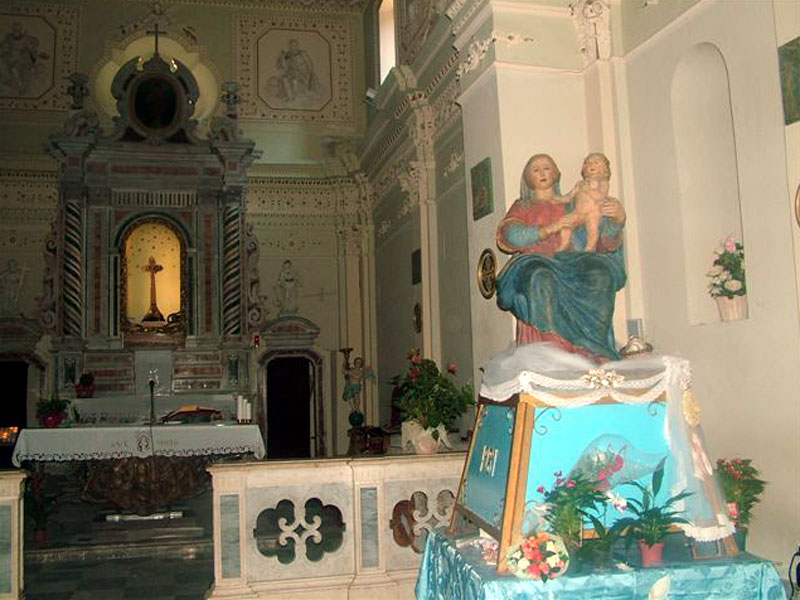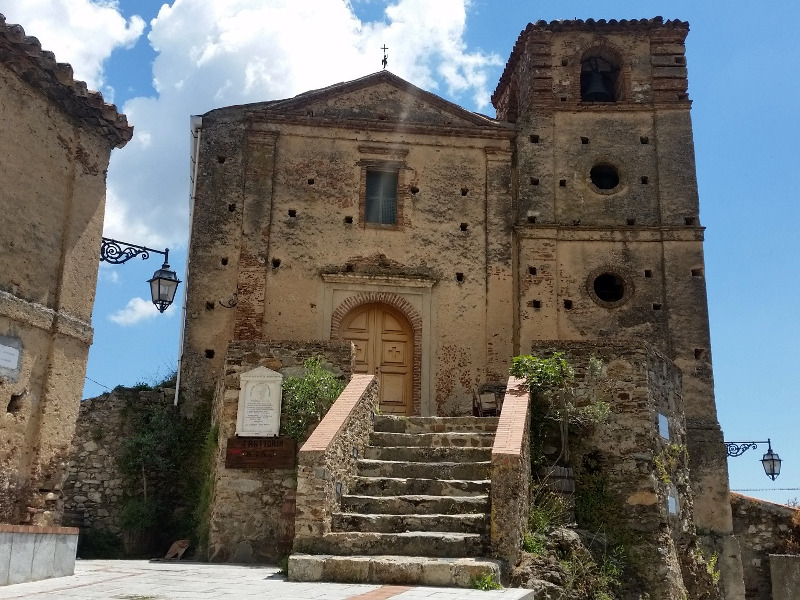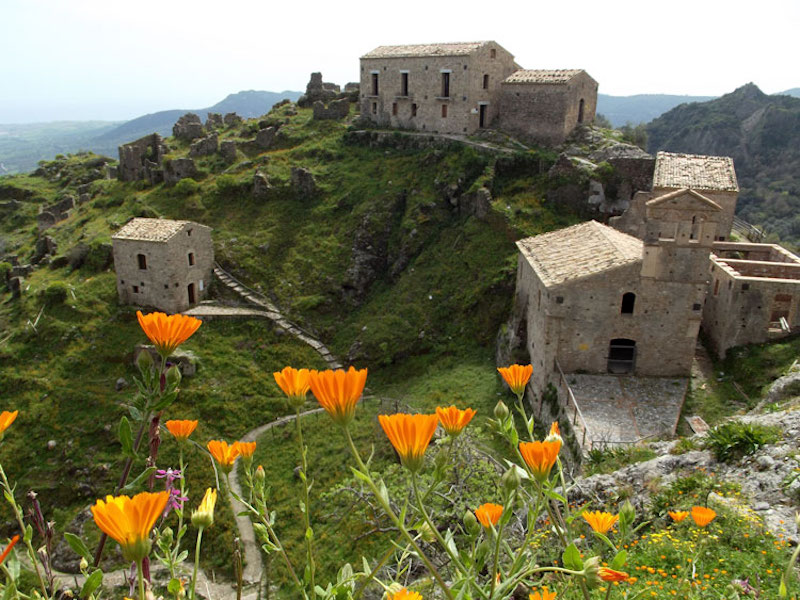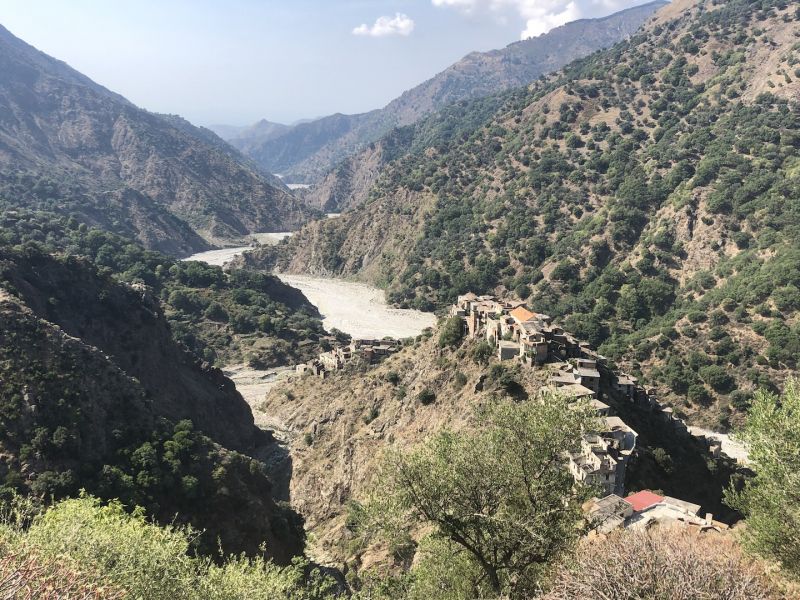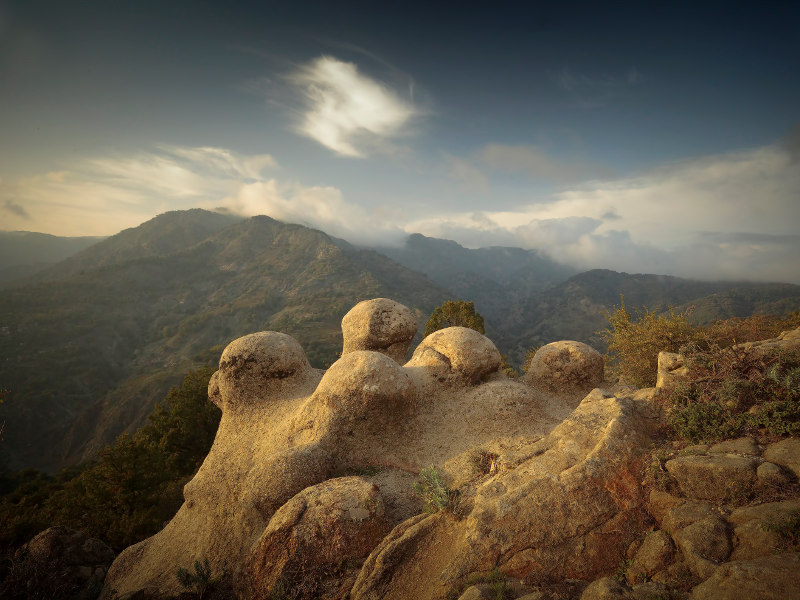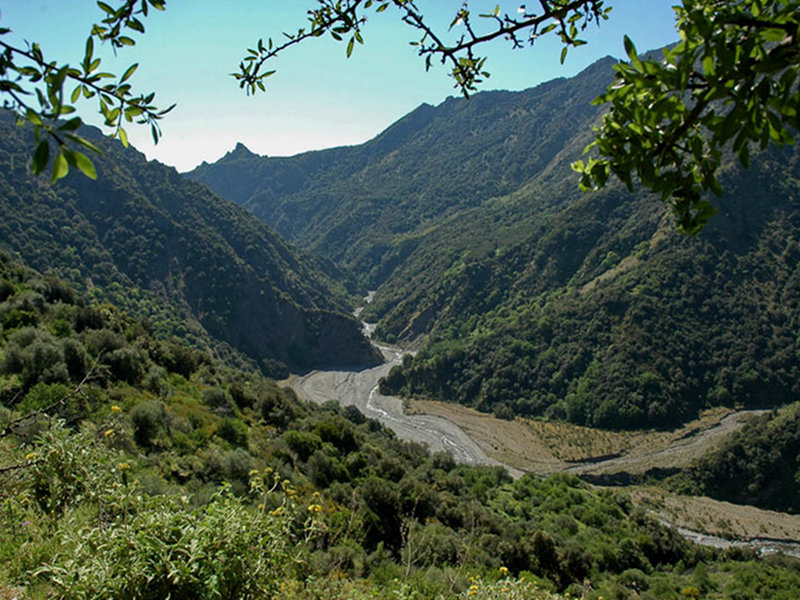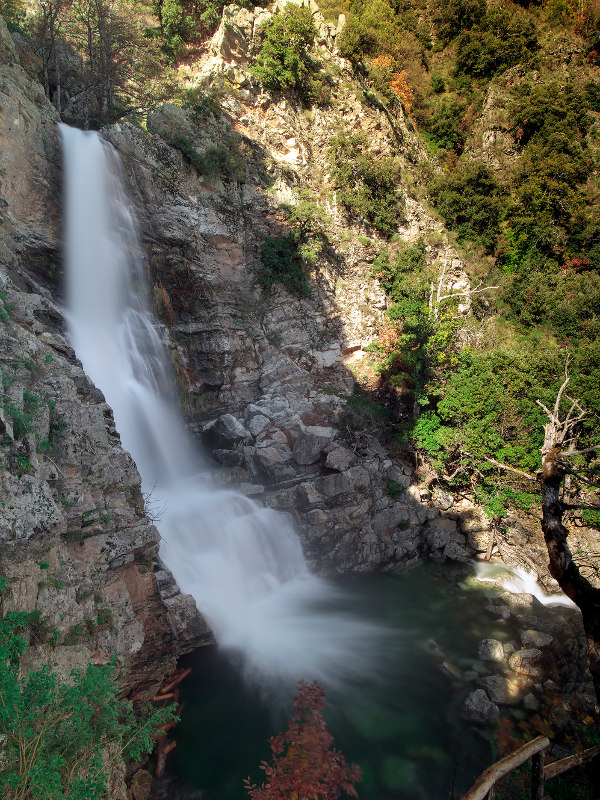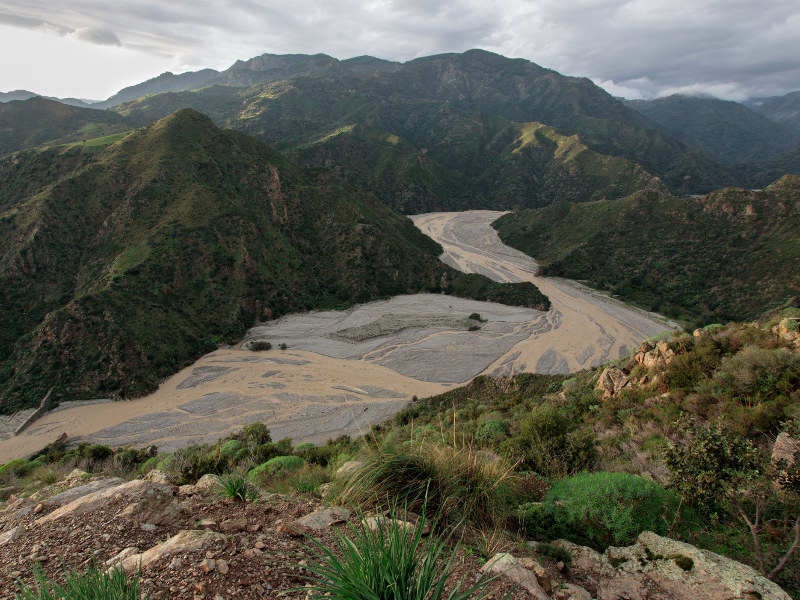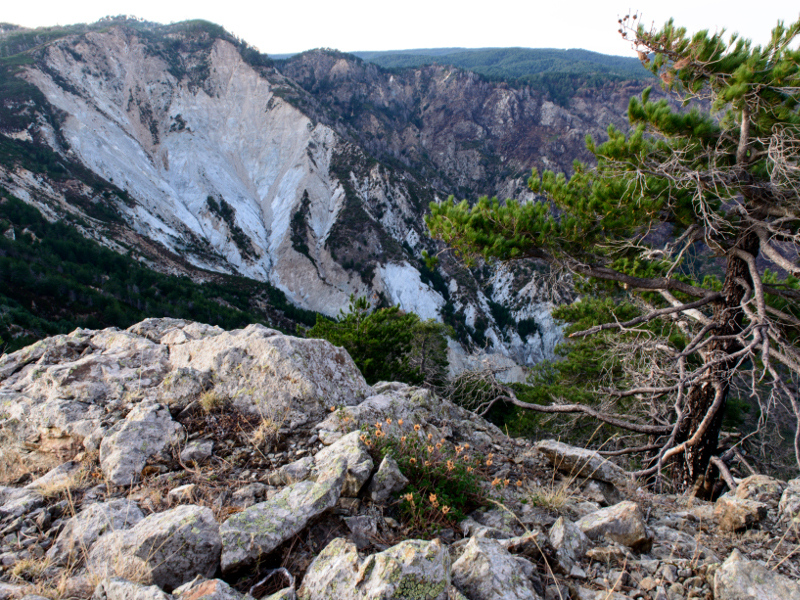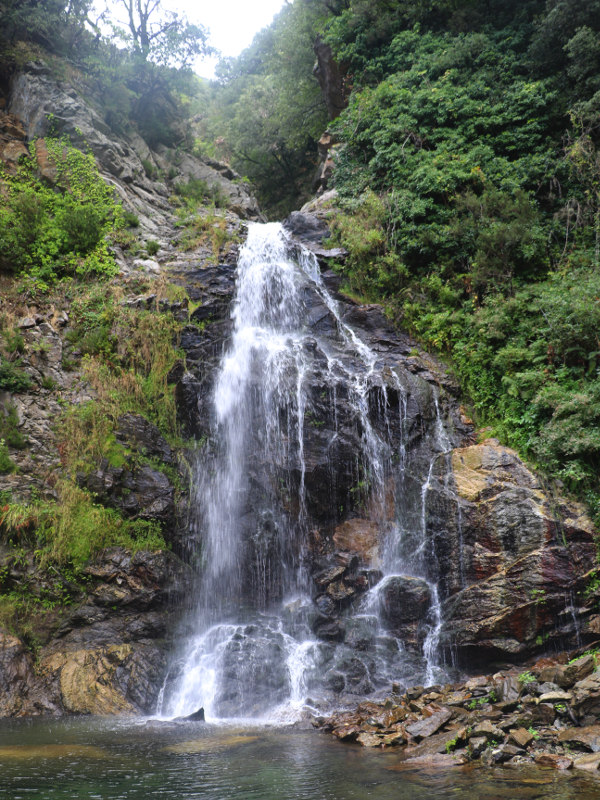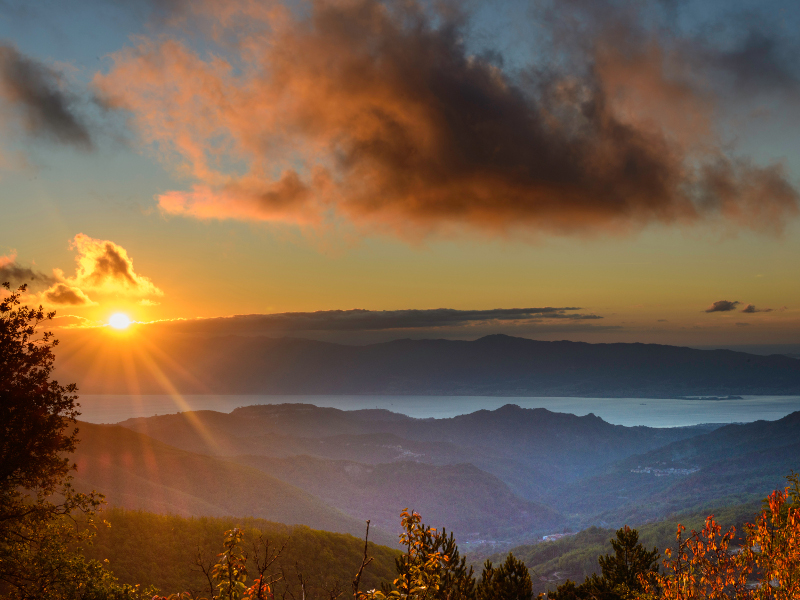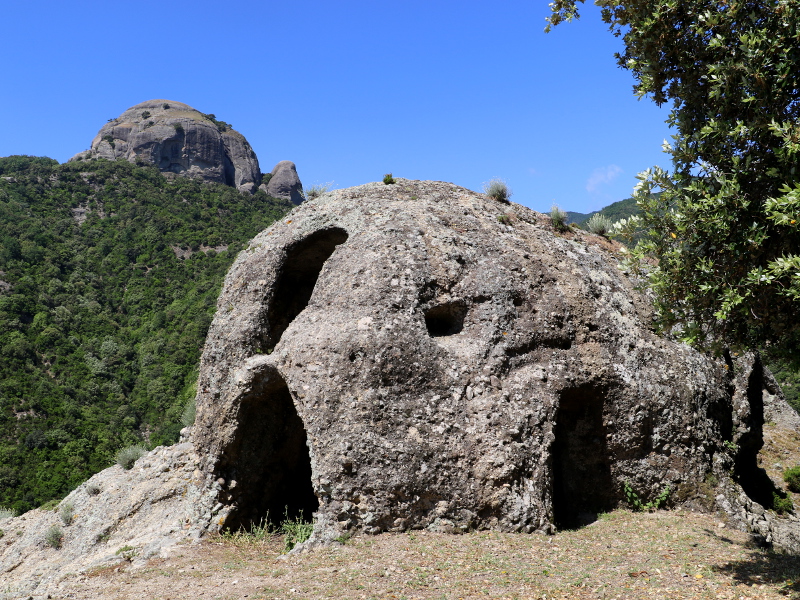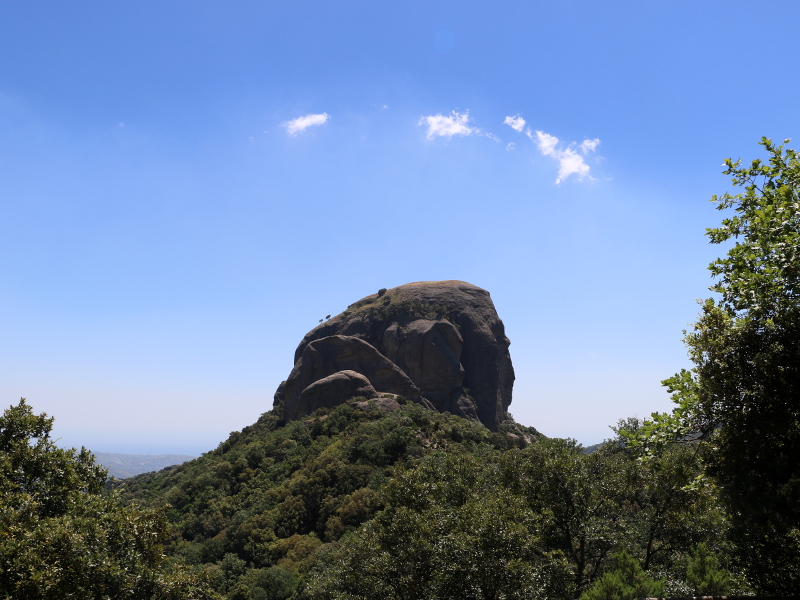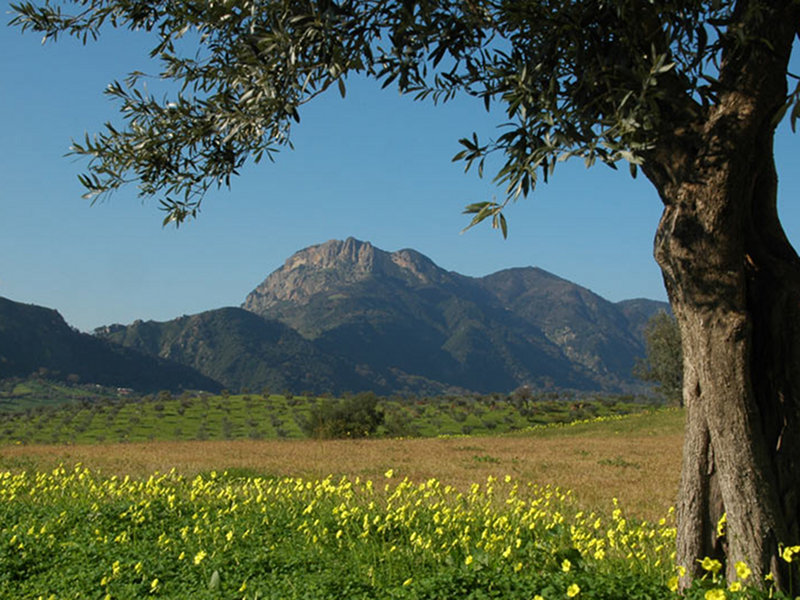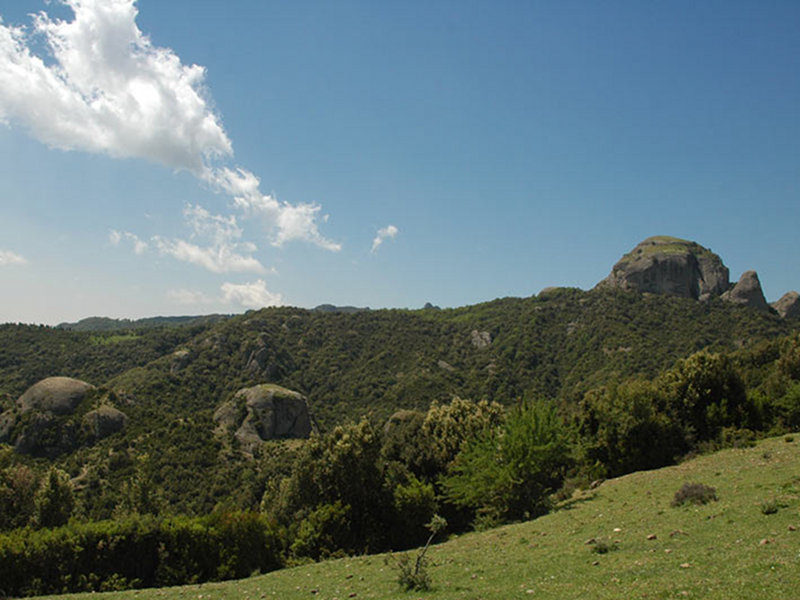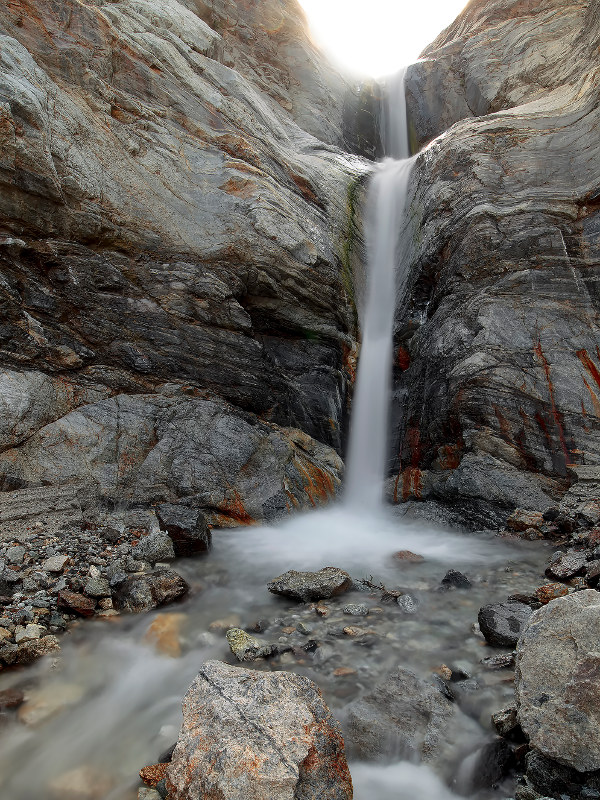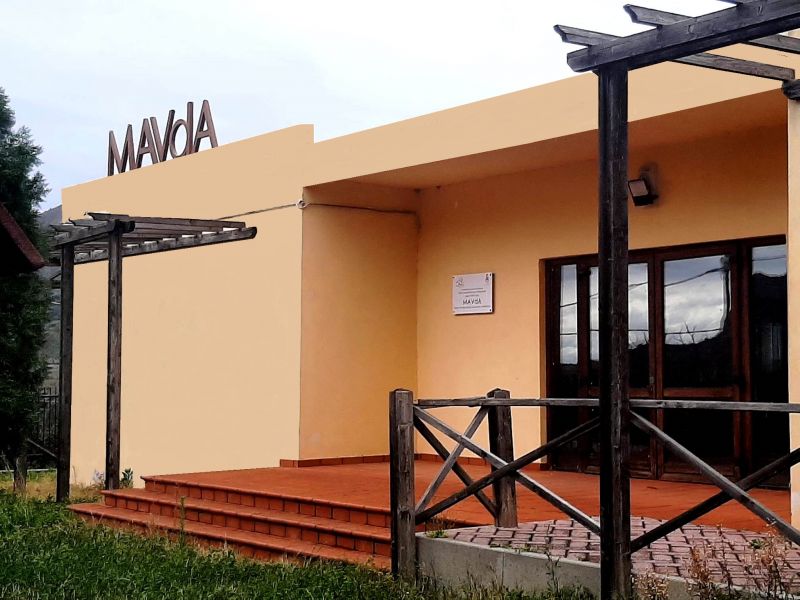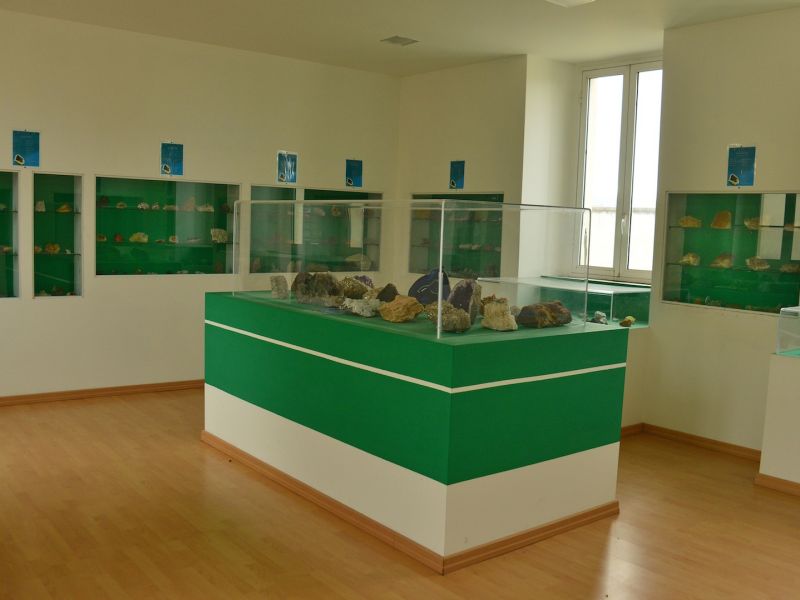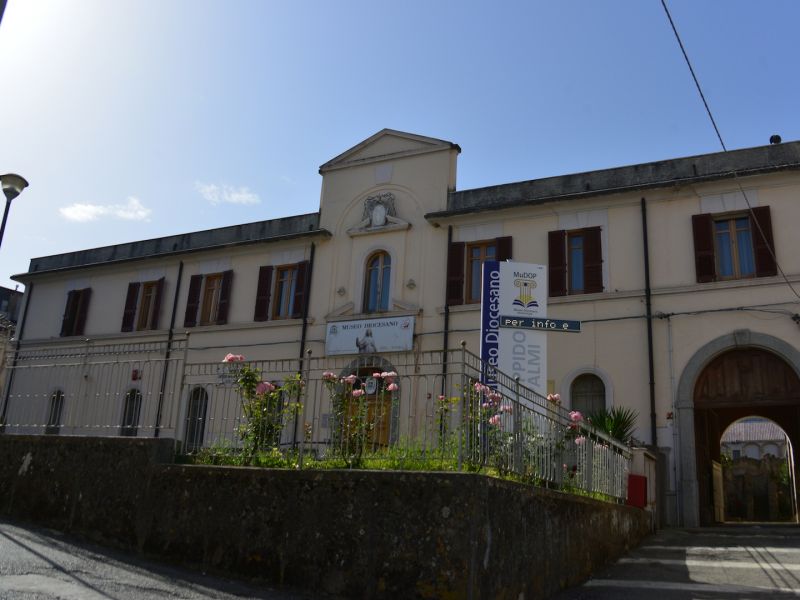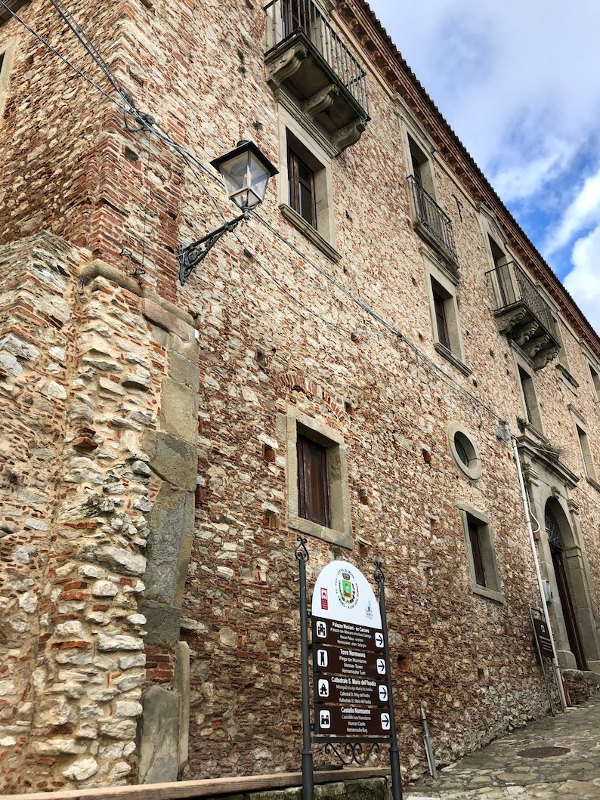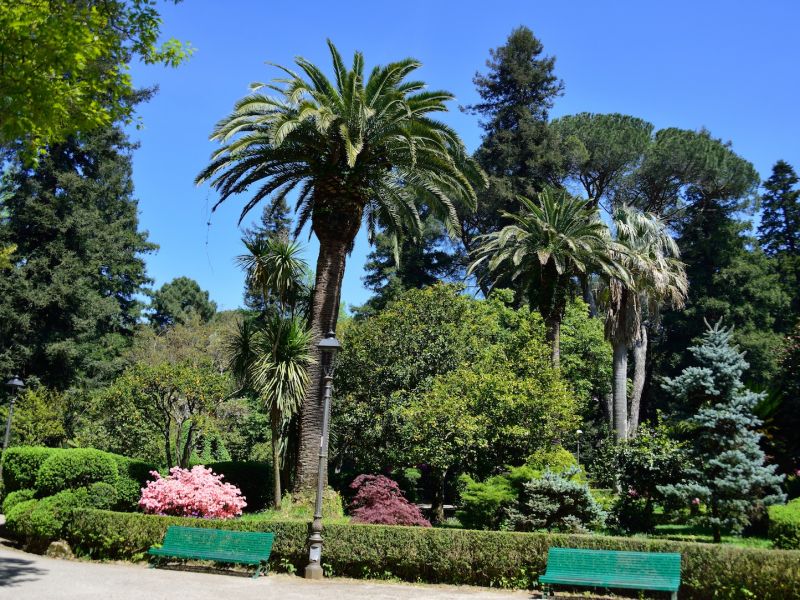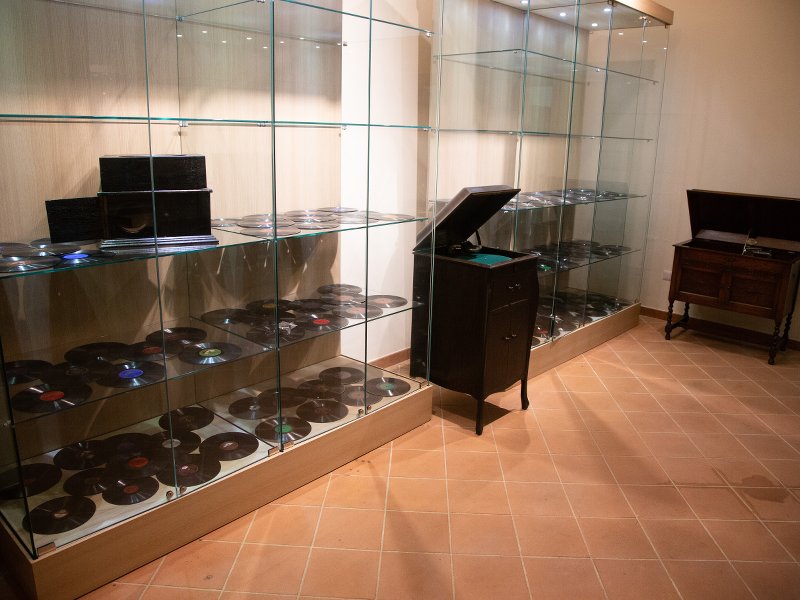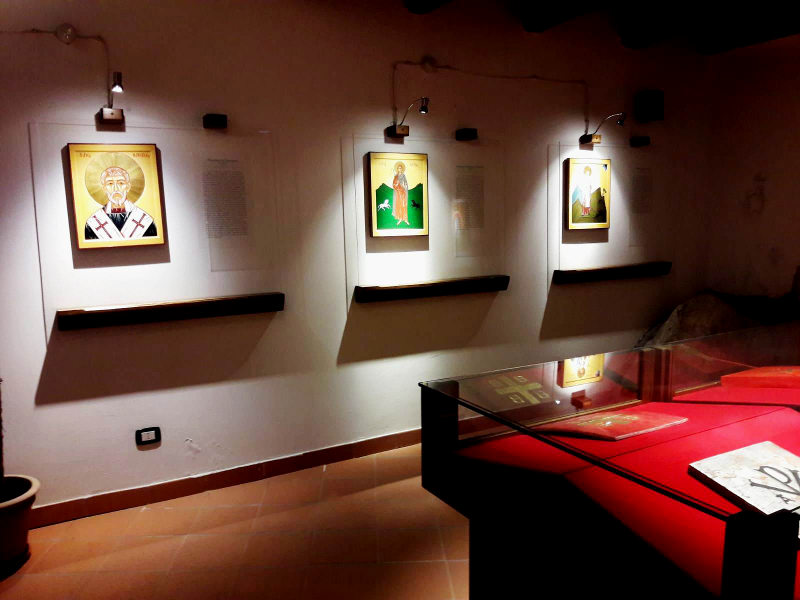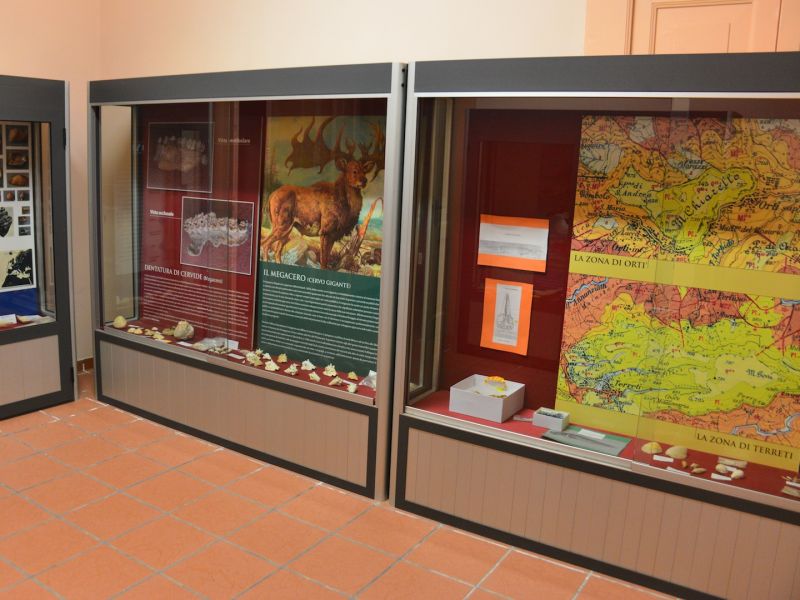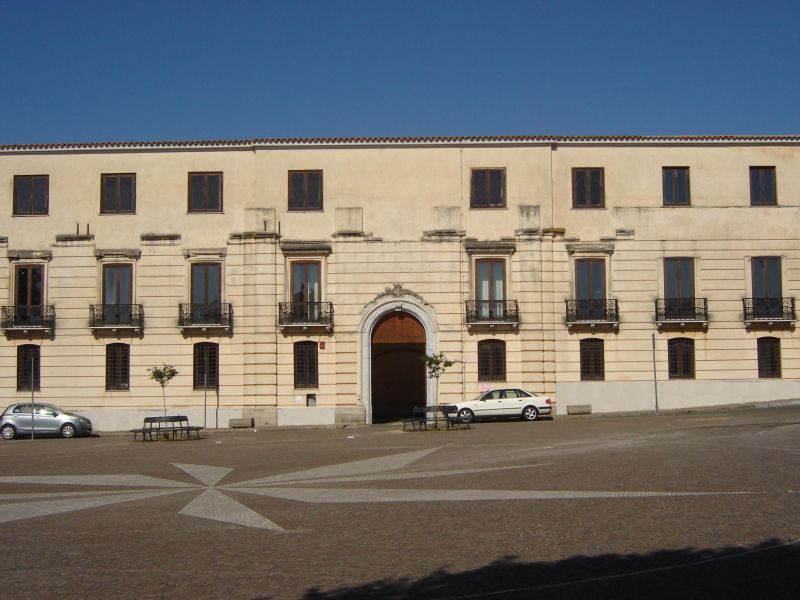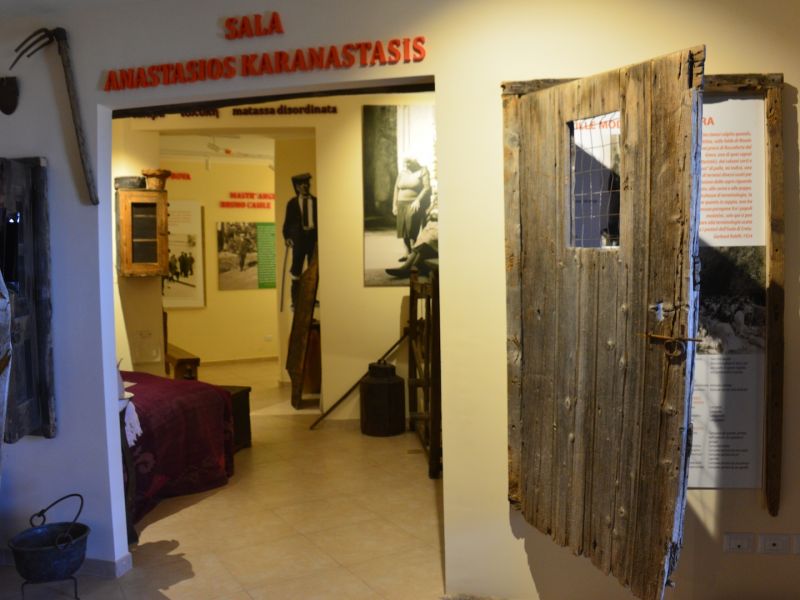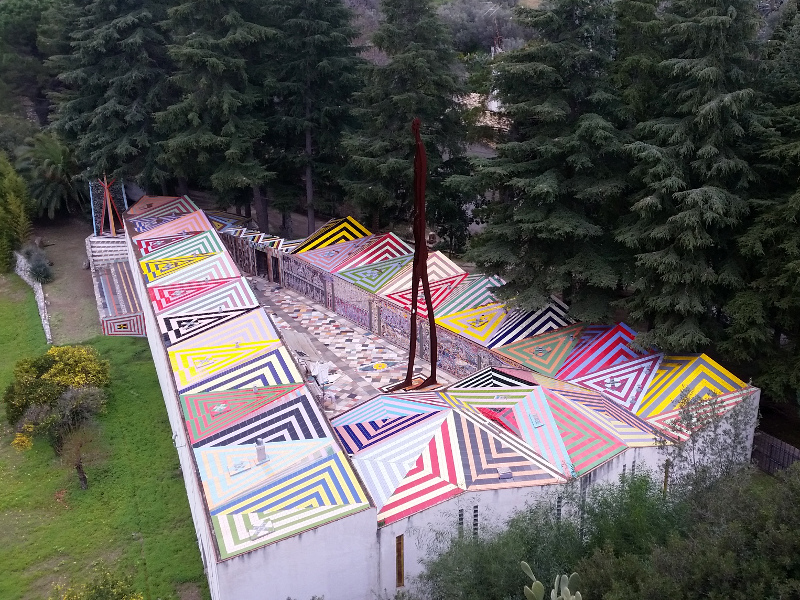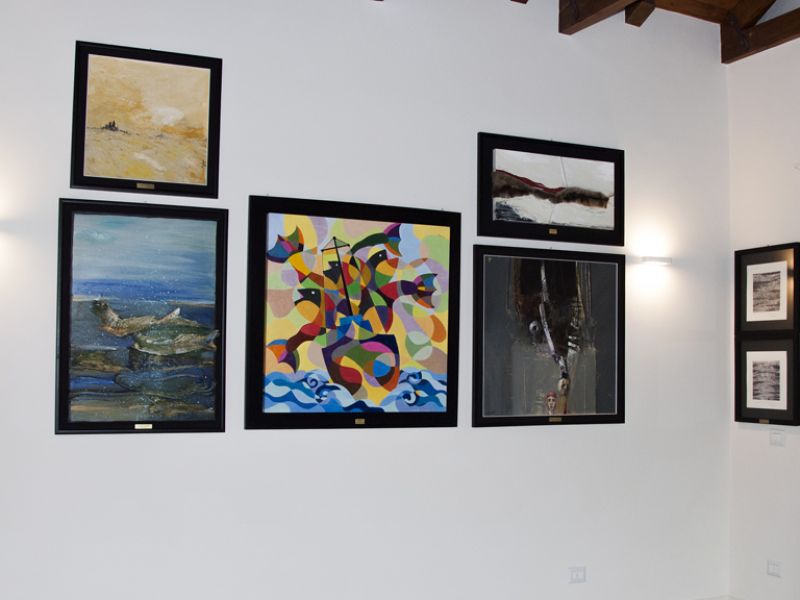Points of Interest
Territory
When the sea and the mountains happily marry in Aspromonte National Park, surprises never end!
Beyond the luxuriant and mysterious wild landscape alternating with
rough and rocky soils, oasis of vegetation caused by small lakes,
terraces over the sea, and the characteristic plains of the Aspromonte,
the kingdom of Neptune dominates two seas: the Tyrrhenian Sea and the
Ionian Sea, which are linked one to the other by the strait.
It is a natural heritage covering about 80,000 hectares which surrounds
the entire Aspromonte from 800 meters up, and which involves the 37 Municipalities of the Province of Reggio Calabria.
The extreme southern branch of the Apennines, Aspromonte
has a particularly differentiated landscape as far as morphology is
concerned.
The Aspromonte massif mainly consists of a group of
metamorphic rocks which also include small granitic parts, and which is
surrounded by sedimentary rocks.
The change is evident if you go from the Tyrrhenian slope to the Ionian slope.
The first mainly consists of crystalline substrata, and it is
characterized by a series of "petti", very steep slopes, and by "piani", plain areas formed by terraces divided into four overlapping
levels degrading towards the sea in suggestive cliffs overhanging the
Tyrrhenian sea and originating the Costa Viola.
On
the contrary, the Ionian slope is characterized by an heterogeneous
landscape originating from the erosion of the sediments' substrata,
which ends in the sea by forming more or less sandy coasts.
Another
feature of the massif, traditionally seen as a pyramid, is given by the
presence of the "fiumare", watercourses without a spring which, because
the shortness of their route and the considerable slant, have a
torrential character and a considerable erosion capacity.
At the mouth, the ground mainly consists of sand, gravel, and pebbles,
the large riverbed is covered in summer by spontaneous vegetation,
while upstream there are valleys dug by the violent power of water.
History and Traditions
Many populations have passed through the mountains of the Aspromonte.
Their traces are still present in the typical and architectonic works,
and above all in the traditions of some villages within the Park of
Aspromonte.
If you enter the towns of the hinterland of Calabria, it will not be
difficult to hear the people speak the Grecanic language.
As a matter of fact, the province of Reggio Calabria and the area of Crotone were flourishing areas of the Magna Graecia.
If the museum dedicated to that period recalls its splendor, it is also
true that the Greeks spread their language among the inhabitants of the
inland areas who, in order to exploit the net of commercial exchanges
made by the Greeks on the slopes of the Aspromonte, went down towards
the sea.
At the end of this period, the populations returned to the
mountains, creating the nuclei of Grecanic culture, where the
Christian-Orthodox rite also developed, thanks to the hegemony of
Bisanzio and to the presence of several monasteries.
Although the
rite had been officially abolished by Nicolò II, it has been celebrated
for the last time in 1573 in Bova and the memory of the Greek culture
is still alive in the villages of the hinterland of Reggio Calabria.
We can find traces of the Grecanic culture not only in Bova superiore,
Samo, Roccaforte del Greco, and Gallicianò, but also in Rocche di san
Pietro, Pietra Castello, and Pietra Cappa.
Cradle
of the Magna Graecia and balcony on the Mediterranean sea, the
flourishing area of the province of Reggio has often been object of
raids by different populations.
The end of the Greek colonization
coincided with the period in which the Bruzi were in power, as
witnessed by the ruins of the walls which had been built in Reggio and
Locri. However, the area has not been spared by pirates and by the
Romans who, after defeating the Bruzi, took possession of Aspromonte,
considered a "promised land" for its vegetation and several
watercourses running through it. As evidence of the presence of the
Greek civilization in Aspropmonte, at about 1,000 meters of height,
there are two rocks dating back to the 4th-6th century BC: one in
Palazzo (in the Municipality of Oppido Mamertina) and the other in Serro Tavola
(in the Municipality of S. Eufemia d'Aspromonte).
Craftsmanship
Craftsmanship is one of the ways in which the relationship between man and nature can be regenerated. As a matter of fact, man is inspired by nature for the creation of its several handicraft products.
Craftsmanship is therefore an art which is strictly linked to the memory of the traditions, and for this reason is very flourishing in Aspromonte.
The wood is used to make agricultural objects or musical instruments. The pipes, made with the arboreal heather roots of Calabria, are the most well-known product. Besides the seasoning which takes about eight or ten years, the outlining, the modelling, and the polishing of the pipes are to be mentioned.
It is a hard work which requires ability and patience; it meets also with the approval of the foreign factories which buy in Aspromonte the bowls for the pipes, which will be exported all over the world under several trademarks.
The weaving activity is instead a task carried out by the women living in the Grecanic area. The "pezzare" of Samo, multicolored striped fabrics made of different clothes and the broom blankets, are particularly famous.
Gerace is the heart of the production of laces made through crochet work and lace pillow.
Seminara is the most important center for ceramics. It is well-known for the typical colored masks which have got an apotropaic value and for the anthropomorphic bottles, like the "moustached" ones, considered to be a sort of amulets.
The traditional handworking of the chestnut wicker and of the straw for the production of baskets and multipurpose containers, is less widespread.
Gastronomy
The country culinary art has ancient roots and it is characterized by a variety of dishes whose constant elements can be linked to the territory of the Calabria region, and whose variants are functional to the historical and socioeconomic evolution and are linked to the many local traditions.
The maccaruni i casa are a typical dish of the area: they are made by housewives, rolled up sometimes with the "ferretto" or by thin shrubs, called cannizzi.
The best ragout is the pork meat ragout, often mixed to the bovine or sometimes goat's meat.
Legumes and vegetables are frequently used, like beans, broccoli, and broad beans to make soups.
There
is a wide range of second dishes, some of which are also used as side
dishes: the "aubergine parmigiana", the vegetable marrow flower
pancakes, the "peperonata", thinly sliced mushrooms cooked with oil
(everything with olive oil), others with pork meat, sometimes as a
sausage, and sometimes boiled for a long time, the "frittole", or with
roast kid with spicy potatoes.
The cheese are highly-esteemed: among them, "ricotta" and "pecorino"; typical is also the smoked charcuterie.
Several are the typical cakes of the festivities: the "Cudduraci" at Easter and the "crispelle" at Christmas.
The Hamlets
The Aspromonte hamlets are full of history and culture: some today are uninhabited, but full of charm and grandeur that makes them attractive for sustainable and quality tourism.
The Geosites
Network of the Aspromonte National Park Museums
When a nation loses contact with its past, with its roots, when it loses pride in its history, its culture and its language, it rapidly declines, stops thinking, stops creating and fades away.
To prevent this from happening in the Aspromonte Geopark, the Park Authority has set up the "Network of Park Museums". It expresses the administration's desire to unite its cultural resources in a single project in which the museum plays the leading role, as an instrument of cultural development of the territory and social cohesion. The aim is to communicate and promote the cultural heritage in a joint way, as it is relevant from different points of view: historical, cultural, artistic, environmental and productive.
The network covers different types of museums, from the artistic sector to the naturalistic-scientific up to the archaeology one.






